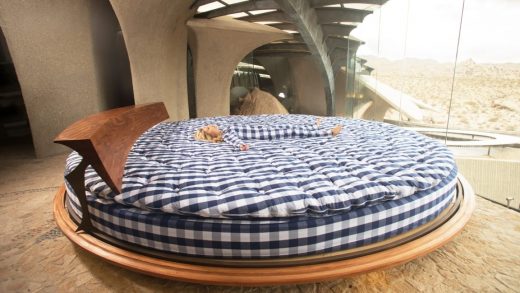Bedrooms in the desert, playrooms in the store: how retailers got creative during COVID-19
During the thick of the pandemic, visiting brick-and-mortar stores was a risky proposition. If they were open at all, going inside required the precision of a military exercise: masked, slathered in sanitizer, and trying to get out as quickly as possible. But as 2022 dawns—even though new variants of the virus continue to spread—consumers seem eager to return to the old-fashioned pleasure of going shopping. And brands are eager to accommodate them.
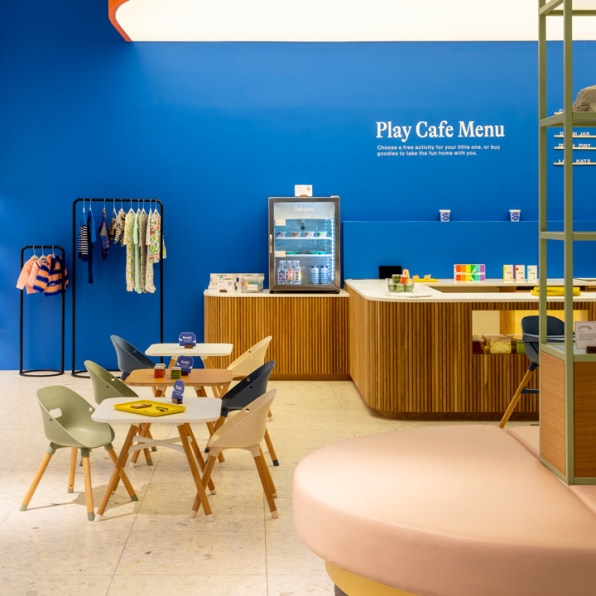
Take the new flagship store from the kids’ home-goods startup Lalo, which opened in New York’s NoHo neighborhood in November. The space is designed for parents and their tots to pull up a (high) chair and stay a while. There’s a “Play Café” where children are greeted by a maître d’ who will offer them a menu of activities, including Play-Doh colors scooped to look like ice cream. There’s a nursing nook for moms who need a private space to nurse or pump. There are classes for parents on sleep training, music lessons for kids, postnatal workouts, and massage sessions. And, of course, there are experts on hand who can help customers pick out the right products for their home. (Since the omicron wave arrived in New York, Lalo is requiring visitors—who must be vaccinated—to fill out a contact-tracing form on-site.)
Lalo is far from alone in investing in physical space. Brands are opening stores at the fastest pace in years, overtaking pre-2019 levels. As of late August, retailers had announced 4,616 new store openings, a 50% increase over all of 2020. And even though the pandemic is far from over, many brands are returning to the pre-pandemic trend of creating immersive, experiential retail experiences.
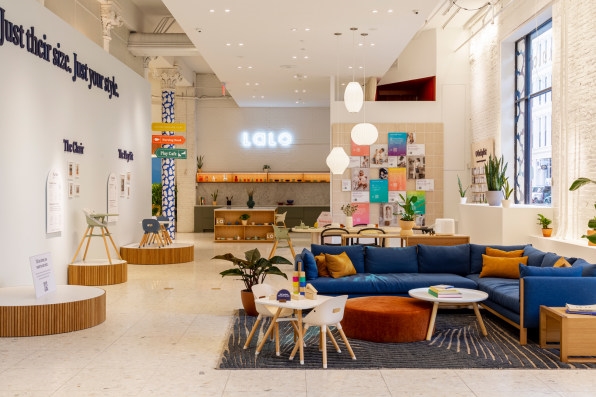
Not Waiting For The Pandemic to End
When the pandemic hit in early 2020, it dealt a major blow to the retail industry. Lockdowns forced brick-and-mortar stores to shutter, and consumer spending on apparel and experiences dipped by 24%. The retail sector experienced a 10.5% drop in sales to nearly $5 trillion, a level not seen since 2016. As a result, many companies filed for bankruptcy, including Lord & Taylor, J.Crew, Neiman Marcus, and J.C. Penney. But in 2021, things began to change. Even though the pandemic was still raging, vaccines became available and consumers started a tentative return to in-person shopping.
Lalo’s founders, Greg Davidson and Michael Wieder, paid close attention to consumer behavior. They launched their brand in 2019 and grew their business online, an approach that worked well during the pandemic. But as their brand was focused on things like high chairs and play tables, they knew some consumers would want to see products in person before purchasing, so it was important to open a brick-and-mortar location. The question was when.
“There were several moments when experts were predicting a return to normalcy, like people returning to work in the fall,” Davidson recalls. “But then the delta variant arrived. In the end, we decided that there would not be a clear end to the pandemic, so we just needed to adapt to this new normal.”
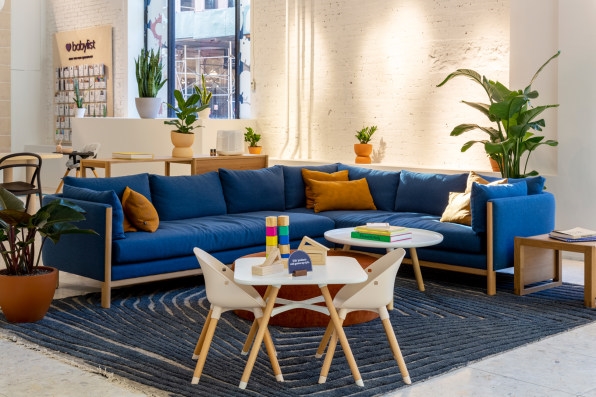
In the fall, they took the plunge, finding a space in NoHo close to a playground and bakeries that young families frequent. They spent time creating a space that would be an oasis for exhausted young parents. But they also made an effort to take even more precautions than the city mandated—like requiring vaccinations for both customers and employees—to make everyone feel safe. The interior is regularly sanitized, class sizes are limited, and all adults are required to wear masks. And these efforts appear to be working.
“The foot traffic at our store has exceeded our expectations,” Wieder says. “Parents in New York have been cooped up in tiny apartments for months and they’re seeing our store as a place to bring their kids.” This has translated into sales. Wieder notes: Customers who stop by begin outfitting their homes with Lalo furniture and then add on the toys and activities sold in the store.
It’s not just startups that are investing in immersive, COVID-friendly in-store experiences. Swedish luxury mattress brand Hästens, founded in 1852, was eager to expand its presence in the U.S. before the pandemic struck. In late 2020, the company developed a concept called the Sleep Spa—with five locations in New York and three in Los Angeles—more than a traditional mattress showroom. Instead, as the name implies, these locations are designed to help customers improve their quality of sleep. Customers can book an hour-long appointment to talk to experts about how to feel more rested. There are also classes that promote better sleep habits through yoga, meditation, and breath work. (With the rise of omicron, Hästens now lets only one customer into the store at a time, working with a single representative.)
“We had already been developing the concept before the pandemic,” says Carl Larsson, managing partner. “But we have been highlighting the exclusivity of the experience, which tends to make customers feel safer, since they know they will be one-on-one with someone.”
Larsson believes experiential retail is going to come back with a vengeance in 2022, and it will be even harder for brands to stand out. Before COVID-19, brands turned to increasingly gimmicky in-person activations to grab consumers’ attention. Often, Larsson says, these experiences had nothing to do with the brands’ product or values. With this in mind, he thought about creative ways to introduce Hästens to the American market in a way that made sense to the brand.
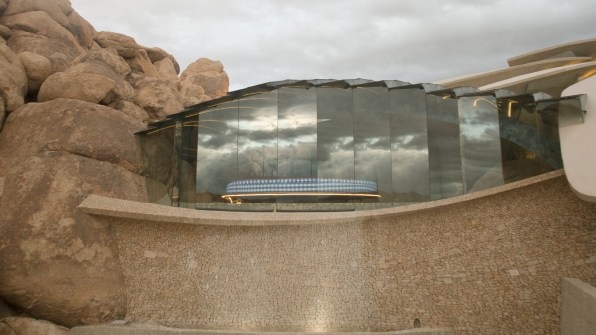
Earlier this month, he launched an outdoor art installation in Joshua Tree, California, to let people experience a Hästens bed in the middle of nature. The company spent six months building a 14-foot round version of a Hästens mattress at the iconic Doolittle House, which was designed by Frank Lloyd Wright protégé Kendrick Bangs Kellogg. The idea was to transform the space into a communal room where people can lie down and relax while taking in the views.
“The partnership with Doolittle House felt authentic and synergistic, from innovation to sustainability, and embodies architecture and craftsmanship,” Larsson says.
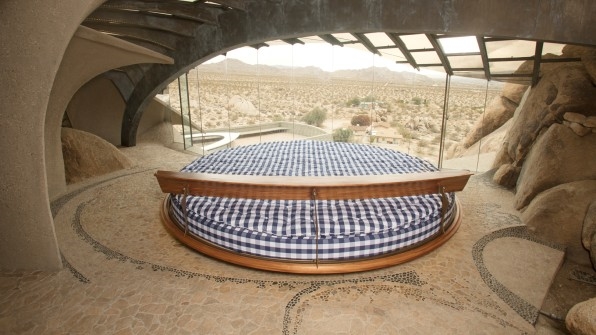
Expansion Mode
Many brands aren’t just investing in in-store experiences; some are also expanding their existing footprint. Take, for instance, Jenni Kayne, the eponymous fashion and lifestyle brand launched in 2003. For years, the company grew slowly, gaining a following in Los Angeles, where the founder is from, and then more broadly in California.
As a brand that focuses on furniture, home goods, and cozy sweaters, Jenni Kayne did well during the pandemic, quadrupling revenue from 2019 to 2021 to $100 million. In the midst of lockdowns, customers still flocked online to buy candles and blankets. Then, when cities reopened, customers came back to the brand’s 13 stores, located in Palo Alto, California; Seattle; Boston; and beyond. These stores tend to have a small footprint and are located in neighborhoods close to restaurants. Like Lalo locations, they are community gathering spots: They offer free massages and wellness treatments on Wednesdays, and host events like book signings.
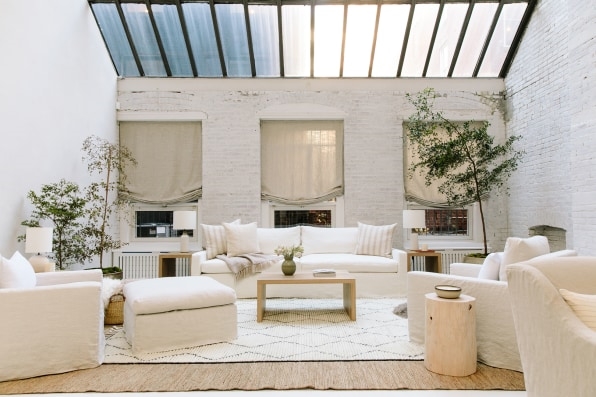
CEO Julia Hunter believes that a key to the brand’s continued growth is to open more stores around the country; she expects to double the brand’s footprint in 2022, noting that the physical stores tend to be highly profitable, with the average customer spending $400. But more than that, they create awareness about the brand, driving increases in online sales. “Our stores are very small but productive,” Hunter says. “Customers who shop in our retail stores have six times the lifetime value of customers who only shop online.”
With the omicron variant spreading rapidly, the brand says it’s still proceeding with new store openings in 2022. However, it will remain flexible. “We’ve adapted our in-store strategy throughout the entire pandemic,” says COO Lauren Holmes, pointing out that the brand pivoted to digital events early on. “We will continue to take similar steps as the COVID landscape evolves, serving customers however they feel most comfortable, whether that be in-person shopping, phone orders, or pickups.”
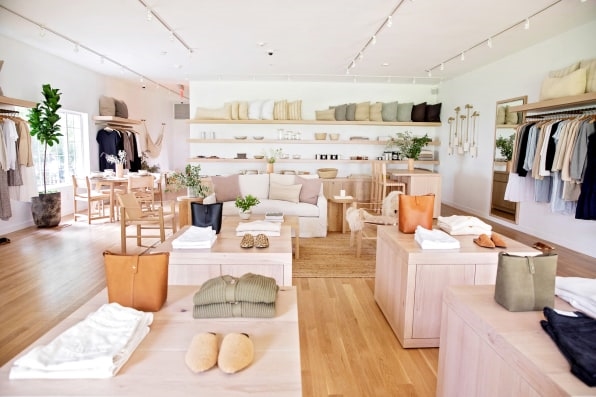
Neighborhood Goods, a retail concept that brings together online-only brands in a kind of modern department store, also expects to grow its physical footprint in 2022. The company launched in 2017 and now has stores in Plano and Austin, Texas, as well as in New York City. These locations feature a rotating array of trendy offerings from the likes of candle brand Boy Smells, beauty brand Megababe, eco-friendly toilet paper Who Gives a Crap, and at-home workout technology Tonal. Each store also has a restaurant with a rotating menu, often featuring in-store brands.
The stores shut down for several months in 2020, before reopening in the summer. Matt Alexander, Neighborhood Goods’s founder and CEO, says he was particularly concerned with protecting employees during the pandemic. The company requires vaccinations for all employees and provides time off for boosters and tests, and paid time off for those who contract the coronavirus. He says foot traffic has been increasing throughout 2021, but given the rising COVID-19 cases around the country, he’s prepared to pivot.
“If we were to see a big outbreak, we would temporarily close the store to avoid overburdening a short-staffed team,” he says. “Looking ahead, we’ll continue to be cautious around events, as we have through the entirety of the pandemic. Otherwise, it’s our intention, as it stands, to continue operating as normal with our health and safety protocols in place.”
He points out that before the pandemic, stores like his pitched themselves as community centers, where people could meet friends and feel like part of their neighborhood. That’s still a focal point, which is why Alexander is actively working to build out new locations throughout the country in 2022, although he has yet to disclose specifics. “Even though the future of the pandemic is uncertain,” he says, “people appear to have a powerful desire to get back out into the world.”
(29)

